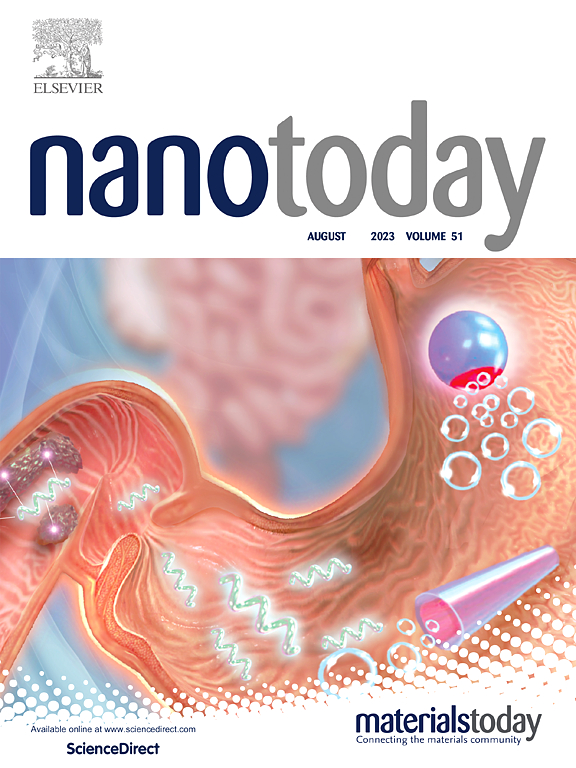Converting the redox inactive P-block metal aluminum into active Fenton-like atomically dispersed catalysts to customize singlet oxygen generation
IF 13.2
1区 材料科学
Q1 CHEMISTRY, MULTIDISCIPLINARY
引用次数: 0
Abstract
Transition-metal-based single-atom catalysts (TM-SACs) are popular for peroxymonosulfate (PMS) conversion into singlet oxygen (1O2) in Fenton-like chemistry, however, p-block atomically dispersed metal catalysts have been rarely explored due to the delocalized s/p bands of p-block metals. Herein, guided by theoretical simulations, we have successfully converted a redox inactive p-block metal aluminum (Al) into an active Fenton-like atomically dispersed Al−N3 catalyst (Al-NC-3) to customize 1O2 generation via PMS oxidation. The Al-NC-3 catalyst exhibits fantastic Fenton-like performance and robust stability for bisphenol A (BPA) degradation with a specific activity of 3.03 × 10−3 L min−1 m−2, which is 8.3-fold higher than that of Al−N4-featured Al-NC-4 counterpart and even comparable to most TM-SACs. The unsaturated Al−N3 species function as Lewis acid sites enabling directional electron extraction from PMS to initiate PMS oxidation for the exclusive production of 1O2. Theoretical calculations reveal that structural alteration from Al−N4 to Al−N3 shifts the p-band center of Al closer to the Fermi energy, which enhances the interaction between PMS and Al−N3 sites and facilitates greater electron transfer from PMS to the Al![]() N3 moiety, accounting for superior specific activity of Al-NC-3 to Al-NC-4. This work offers useful guidance to design novel Fenton-like SACs for oriented 1O2 generation towards environmental applications.
N3 moiety, accounting for superior specific activity of Al-NC-3 to Al-NC-4. This work offers useful guidance to design novel Fenton-like SACs for oriented 1O2 generation towards environmental applications.
求助全文
约1分钟内获得全文
求助全文
来源期刊

Nano Today
工程技术-材料科学:综合
CiteScore
21.50
自引率
3.40%
发文量
305
审稿时长
40 days
期刊介绍:
Nano Today is a journal dedicated to publishing influential and innovative work in the field of nanoscience and technology. It covers a wide range of subject areas including biomaterials, materials chemistry, materials science, chemistry, bioengineering, biochemistry, genetics and molecular biology, engineering, and nanotechnology. The journal considers articles that inform readers about the latest research, breakthroughs, and topical issues in these fields. It provides comprehensive coverage through a mixture of peer-reviewed articles, research news, and information on key developments. Nano Today is abstracted and indexed in Science Citation Index, Ei Compendex, Embase, Scopus, and INSPEC.
 求助内容:
求助内容: 应助结果提醒方式:
应助结果提醒方式:


